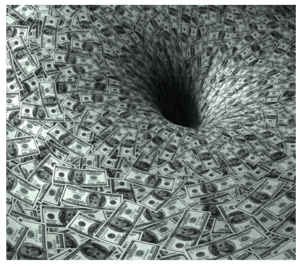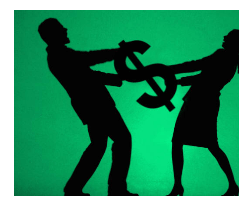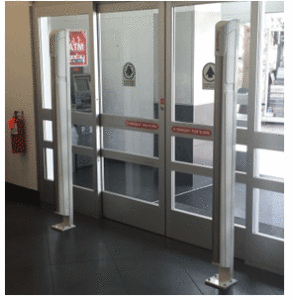Facebook and other social media sites can be a proverbial gold-mine of information; especially if you are dealing with a rather stupid criminal. In my job, I see and interview dozens and dozens of “professional” shoplifters every month. My job is to get as much Intel as possible from them and make bigger cases. Often, that means working very closely with local and state law enforcement officials and even other retailers. No other time have I had such a prolific criminal than with “Jane”.
I first met Jane at my home store (I am responsible for 30). My agent apprehended Jane and several of her cohorts after they attempted leaving the store with several hundred dollars’ worth of clothing concealed on them. After they left for jail, I started my research. Facebook has become my first stop. 10 seconds later I find her page. Completely open to the public. First thing I see is this:

It doesn’t take a rocket scientist to figure this one out. As a seasoned investigator, Just looking at this told me it was stolen. Based on some other photos, I knew this came from one of my stores. Since Jane was nice enough to keep her profile public and include a time, date and location stamp on those pictures, I started my research. Within an hour, I found corresponding CCTV footage of her entering another one of my store locations. Sure as heck, I had video of her stealing everything in this picture. I started scrolling from there. I found that she was also returning stolen goods for gift cards. She posted some shots of a few from my stores. In the comment section (which generates a lot of activity) she was kind enough to take a photo of the rear of the card. I suspended the funds ☺

With all this great information, I decided to compile it all and share it with law enforcement and my LP contacts throughout the state. I was able to make some significant cases on this very prolific shoplifter from some simple research on a social media page. In fact, the evidence was enough to cut several warrants for her arrest, which caught up to her relatively quick in a place, far, far from her home. ☺
To me, what’s even more ridiculous is reading the comments on her “items”. It would seem as though everyone on her “friends list ” is well aware of how she is obtaining the merchandise and are even encouraging the actions. These are the types of people that hurt big box retailers and that can put small shops out of business. These are the shoplifters we need to focus on and the ones that the criminal justice system need to come down hard on. The only thing that will stop Jane from stealing is being behind bars. This is her full time job.
” is well aware of how she is obtaining the merchandise and are even encouraging the actions. These are the types of people that hurt big box retailers and that can put small shops out of business. These are the shoplifters we need to focus on and the ones that the criminal justice system need to come down hard on. The only thing that will stop Jane from stealing is being behind bars. This is her full time job.
Jane is not alone. Across the country and in every city, there are shoplifters that are targeting your stores that do this for a living. They steal full time instead of getting a job. As Loss Prevention professionals, these are the cases that deserve prosecution to the fullest extent allowed by law.
So the next time you’re dealing with a shoplifter, take the extra step and see what you can’t uncover from their online footprint. You may be surprised at what you find!
 It’s a normal day at the office. I’m working on a few cases and an email comes across from a manager at one of my stores. There’s not much to it; just says “John” called the store looking for you, here’s his number. Curious to who John is, I immediately give him a call. In my mind I’m thinking it could be a detective, or an Assistant District Attorney maybe.
It’s a normal day at the office. I’m working on a few cases and an email comes across from a manager at one of my stores. There’s not much to it; just says “John” called the store looking for you, here’s his number. Curious to who John is, I immediately give him a call. In my mind I’m thinking it could be a detective, or an Assistant District Attorney maybe.

 Yep, you probably are! The shoplifter that walked out the door with your $45 item cost you MORE actual money than $45!
Yep, you probably are! The shoplifter that walked out the door with your $45 item cost you MORE actual money than $45!
 I’m sure you’ve already read how shoplifters cost you money. It’s probably hard to digest the dire financial implications that shoplifters have on all of our businesses. Without adequate controls in place, you are putting your business and your financial well-being at risk, and honestly, you just can’t do that. That’s why we have to have a camera system and why EAS systems are a necessity and not just a “nice to have” technology. That’s exactly why we have to invest in exception reporting tools to help us identify criminal activity and why we preach the value of exceptional customer service in our stores.
I’m sure you’ve already read how shoplifters cost you money. It’s probably hard to digest the dire financial implications that shoplifters have on all of our businesses. Without adequate controls in place, you are putting your business and your financial well-being at risk, and honestly, you just can’t do that. That’s why we have to have a camera system and why EAS systems are a necessity and not just a “nice to have” technology. That’s exactly why we have to invest in exception reporting tools to help us identify criminal activity and why we preach the value of exceptional customer service in our stores. You have (or I hope you have) read the last article on preventing check fraud. It’s a great way to protect your business from a different avenue of fraud. Another, much more popular and prevalent scheme is credit card fraud. The United States lags far behind the other major countries in the fight against credit card fraud. We’ve only just begun adopting chip and pin technology and it will be several more years before we see magnetic strips become a relic of the past. So exactly how can you identify and prevent a fraudulent change from happening in your store and how exactly do you lose money on these transactions?
You have (or I hope you have) read the last article on preventing check fraud. It’s a great way to protect your business from a different avenue of fraud. Another, much more popular and prevalent scheme is credit card fraud. The United States lags far behind the other major countries in the fight against credit card fraud. We’ve only just begun adopting chip and pin technology and it will be several more years before we see magnetic strips become a relic of the past. So exactly how can you identify and prevent a fraudulent change from happening in your store and how exactly do you lose money on these transactions? You know, we talk about the thousands of ways you, the small business owner, loses money to thieves constantly. Most of that is centered on shoplifters and boosters stealing your merchandise. We talk about that for good reason… it’s one of the biggest financial impacts to your business if left unchecked. However, there are so many other ways that your business can be targeted by criminals and some of them may appear so legitimate, that you would have no idea you were a victim for weeks. In that time, the criminal is long gone and you’re left paying for that theft out of your pocket. One area of training that is often overlooked in retail is check fraud. I’ll give you some advice on how to identify this in your store and protect yourself from vulnerability.
You know, we talk about the thousands of ways you, the small business owner, loses money to thieves constantly. Most of that is centered on shoplifters and boosters stealing your merchandise. We talk about that for good reason… it’s one of the biggest financial impacts to your business if left unchecked. However, there are so many other ways that your business can be targeted by criminals and some of them may appear so legitimate, that you would have no idea you were a victim for weeks. In that time, the criminal is long gone and you’re left paying for that theft out of your pocket. One area of training that is often overlooked in retail is check fraud. I’ll give you some advice on how to identify this in your store and protect yourself from vulnerability. What is the solution to shoplifting and employee theft?
What is the solution to shoplifting and employee theft? Employee theft is a common and costly problem in retail. Some businesses’ are reporting that, for the first time, internal pilferage has now surpassed external. There are many ways to control and manage internal theft. But, one of the most effective ways is often overlooked. Stop it before it starts.
Employee theft is a common and costly problem in retail. Some businesses’ are reporting that, for the first time, internal pilferage has now surpassed external. There are many ways to control and manage internal theft. But, one of the most effective ways is often overlooked. Stop it before it starts.